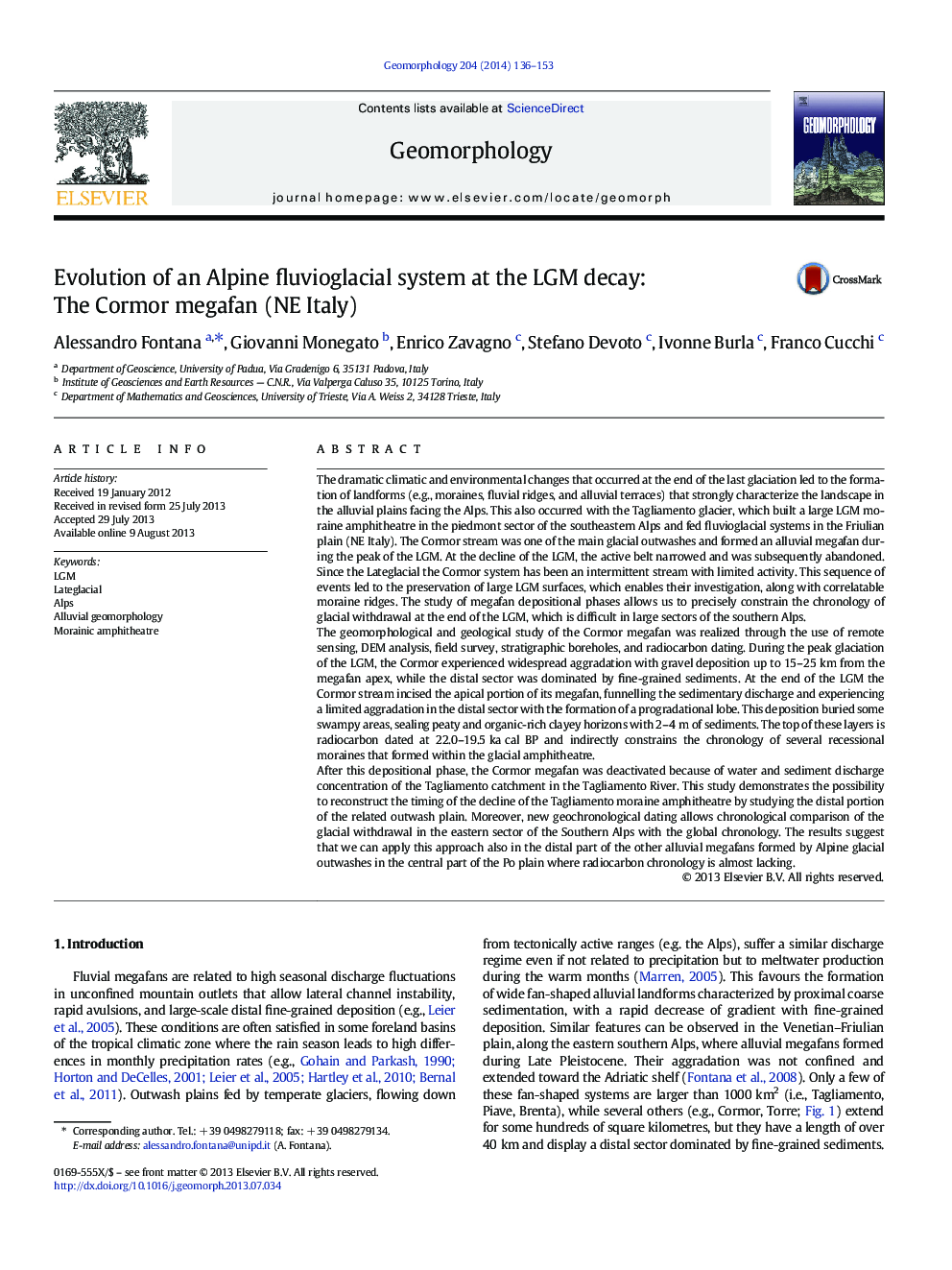| کد مقاله | کد نشریه | سال انتشار | مقاله انگلیسی | نسخه تمام متن |
|---|---|---|---|---|
| 6432716 | 1635445 | 2014 | 18 صفحه PDF | دانلود رایگان |

The dramatic climatic and environmental changes that occurred at the end of the last glaciation led to the formation of landforms (e.g., moraines, fluvial ridges, and alluvial terraces) that strongly characterize the landscape in the alluvial plains facing the Alps. This also occurred with the Tagliamento glacier, which built a large LGM moraine amphitheatre in the piedmont sector of the southeastern Alps and fed fluvioglacial systems in the Friulian plain (NE Italy). The Cormor stream was one of the main glacial outwashes and formed an alluvial megafan during the peak of the LGM. At the decline of the LGM, the active belt narrowed and was subsequently abandoned. Since the Lateglacial the Cormor system has been an intermittent stream with limited activity. This sequence of events led to the preservation of large LGM surfaces, which enables their investigation, along with correlatable moraine ridges. The study of megafan depositional phases allows us to precisely constrain the chronology of glacial withdrawal at the end of the LGM, which is difficult in large sectors of the southern Alps.The geomorphological and geological study of the Cormor megafan was realized through the use of remote sensing, DEM analysis, field survey, stratigraphic boreholes, and radiocarbon dating. During the peak glaciation of the LGM, the Cormor experienced widespread aggradation with gravel deposition up to 15-25 km from the megafan apex, while the distal sector was dominated by fine-grained sediments. At the end of the LGM the Cormor stream incised the apical portion of its megafan, funnelling the sedimentary discharge and experiencing a limited aggradation in the distal sector with the formation of a progradational lobe. This deposition buried some swampy areas, sealing peaty and organic-rich clayey horizons with 2-4 m of sediments. The top of these layers is radiocarbon dated at 22.0-19.5 ka cal BP and indirectly constrains the chronology of several recessional moraines that formed within the glacial amphitheatre.After this depositional phase, the Cormor megafan was deactivated because of water and sediment discharge concentration of the Tagliamento catchment in the Tagliamento River. This study demonstrates the possibility to reconstruct the timing of the decline of the Tagliamento moraine amphitheatre by studying the distal portion of the related outwash plain. Moreover, new geochronological dating allows chronological comparison of the glacial withdrawal in the eastern sector of the Southern Alps with the global chronology. The results suggest that we can apply this approach also in the distal part of the other alluvial megafans formed by Alpine glacial outwashes in the central part of the Po plain where radiocarbon chronology is almost lacking.
Journal: Geomorphology - Volume 204, 1 January 2014, Pages 136-153